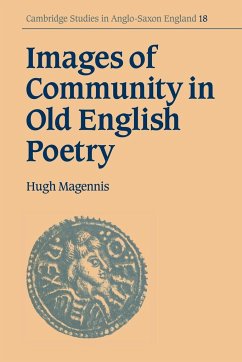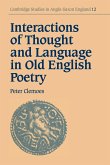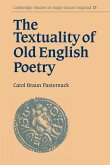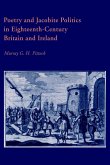This book explores ideas of community and the relationship of individuals to communities widely evident in Old English poetry.
This book explores ideas of community and the relationship of individuals to communities widely evident in Old English poetry. It pays particular attention to the context in which major poetic manuscripts of the late Anglo-Saxon period were received, a time when concerns about community appear to have been of special urgency. The book identifies key features of the audience or readership of Old English poetry in this period, and relates the interests of these groups of people to themes reflected in the poetic texts. Magennis analyses a wide range of poems and examines the imagery on which they draw, concentrating particularly on depictions of hall (including feasting and drinking), stronghold, city and landscape. In a poetry in which communal structures are typically associated with male ideals of warriorship and fellowship, the position and treatment of women is also shown to merit close consideration.
Review quote:
"...the book will be a solid introduction to Old English poetry for an undergradute or beginning graduate student."
M.A. Dalbey, Choice
Table of contents:
Acknowledgements; List of abbreviations; 1. Introduction: ideas of community and an Anglo-Saxon audience/readership; 2. Hall and city, feasting and drinking: images of communal life; 3. Hall and feasting in Beowulf; 4. Hall and feasting: transformations and alternative perspectives; 5. Personal in conflict with communal; 6. The mythic landscape of Beowulf: sea, stronghold and wilderness; 7. The dwelling-places of God's people: place and setting in biblical poetry; 8. Places of trial and triumph in hagiographical poetry; 9. Conclusion: community and power in later poetic and other texts; Bibliography; Index.
This book explores ideas of community and the relationship of individuals to communities widely evident in Old English poetry. It pays particular attention to the context in which major poetic manuscripts of the late Anglo-Saxon period were received, a time when concerns about community appear to have been of special urgency. The book identifies key features of the audience or readership of Old English poetry in this period, and relates the interests of these groups of people to themes reflected in the poetic texts. Magennis analyses a wide range of poems and examines the imagery on which they draw, concentrating particularly on depictions of hall (including feasting and drinking), stronghold, city and landscape. In a poetry in which communal structures are typically associated with male ideals of warriorship and fellowship, the position and treatment of women is also shown to merit close consideration.
Review quote:
"...the book will be a solid introduction to Old English poetry for an undergradute or beginning graduate student."
M.A. Dalbey, Choice
Table of contents:
Acknowledgements; List of abbreviations; 1. Introduction: ideas of community and an Anglo-Saxon audience/readership; 2. Hall and city, feasting and drinking: images of communal life; 3. Hall and feasting in Beowulf; 4. Hall and feasting: transformations and alternative perspectives; 5. Personal in conflict with communal; 6. The mythic landscape of Beowulf: sea, stronghold and wilderness; 7. The dwelling-places of God's people: place and setting in biblical poetry; 8. Places of trial and triumph in hagiographical poetry; 9. Conclusion: community and power in later poetic and other texts; Bibliography; Index.








